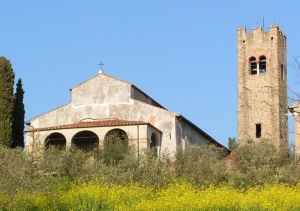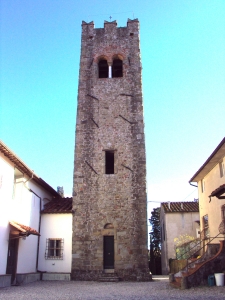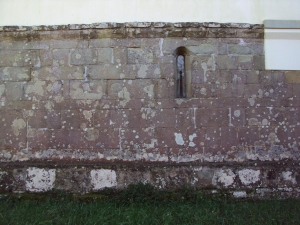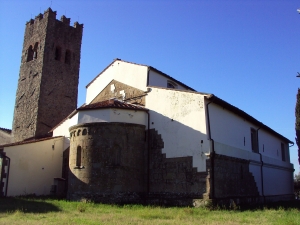
Information
Foundation:
XII secolo
District/Location:
Lucca, località Pieve Santo Stefano
District:
Piana di Lucca


The parish church of Saint Stefano was built during the 12th century with a three-nave plan with an apse: surrounded by olive groves, it dominates one of the most beautiful parts of the countryside in the entire provincial territory, open on the plain of Lucca that stands out its towers in the distance.
Pieve Santo Stefano, Lucca
The parish church of Santo Stefano, in the locality of the same name, arose during the 12th century in a dominant position over the territories subjected to it and over the remains of a small early Christian church, as evidenced by the dedication to the typical proto-martyr of many early medieval foundations. This dating back to the 12th century suggests the remaining medieval structures - the north side and the apse with three mullioned windows, built with square sandstone ashlars - and the documentation of the time: in fact it testifies to a particular prestige which the institution had to enjoy in that era, when the parish priest of Santo Stefano was even called upon to settle a dispute between the parish church of Camaiore and the cathedral chapter of Lucca. The medieval building must have already had the current plan with three naves - probably divided by pillars, as in many of the parishes in the territory of the diocese of Lucca - but the church underwent considerable expansion in the 16th century, during which the three-arched portico still existing today was added to the facade. Two centuries later, towards the end of the eighteenth century, it was the interior that was completely redesigned, assuming the current appearance with three naves divided by plastered pillars; the vaulted ceiling houses a decoration from the early 20th century. The bell tower still retains the structure and the medieval masonry, placed on the northern side towards the apse area. One of the most important works by Zacchia da Vezzano comes from the church, the Madonna between saints Rocco and Sebastiano, now preserved in the National Museum of Villa Guinigi and dated to the third decade of the 16th century. The altarpiece was replaced in the church by a copy of Michele Ridolfi, a Lucchese painter of the first half of the nineteenth century. A precious 16th century organ is still present in the church.
Scopri altre attrazioni vicino a Parish Church of Saint Stefano
See allYou may also like..
See allFind more
0















